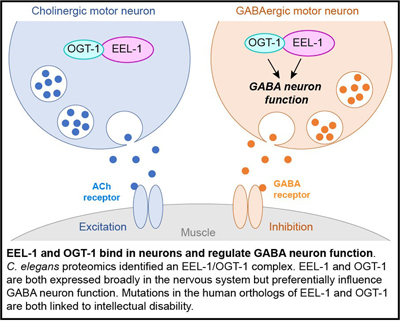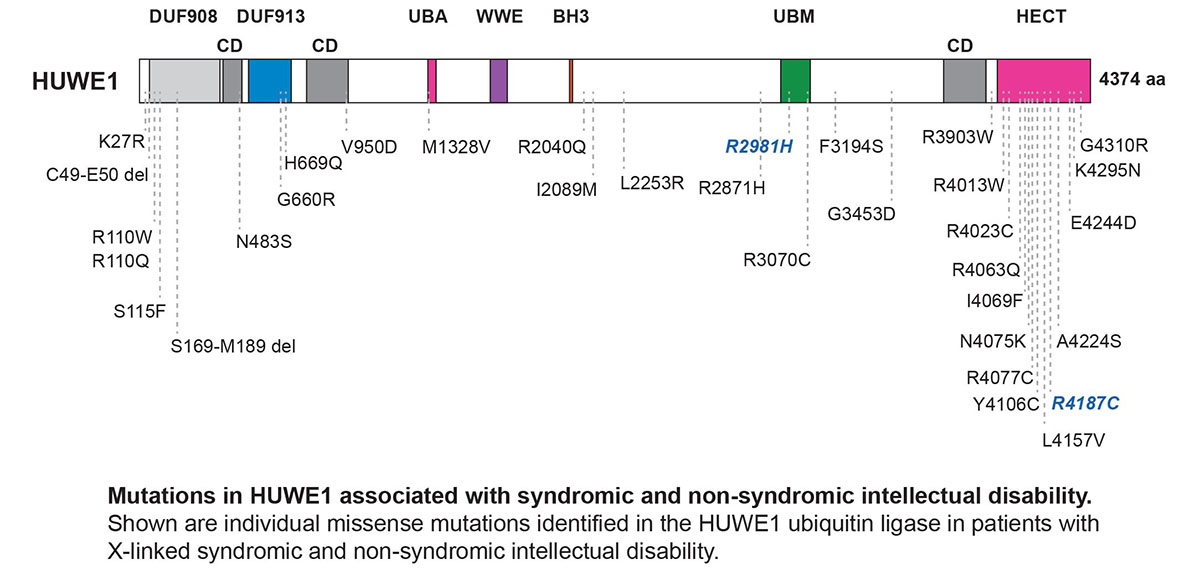Regulation of Inhibitory GABA Neuron Function
 Another ubiquitin ligase that the Grill Lab studies is called EEL-1 in C. elegans and HUWE1 in mammals. Our interest in HUWE1 is driven on two levels. 1) Better understanding how ubiquitin ligase activity shapes inhibitory GABA neuron function. 2) Strong, growing evidence that human genetic changes that reduce or increase HUWE1 function result in syndromic and non-syndromic forms of intellectual disability.
Another ubiquitin ligase that the Grill Lab studies is called EEL-1 in C. elegans and HUWE1 in mammals. Our interest in HUWE1 is driven on two levels. 1) Better understanding how ubiquitin ligase activity shapes inhibitory GABA neuron function. 2) Strong, growing evidence that human genetic changes that reduce or increase HUWE1 function result in syndromic and non-syndromic forms of intellectual disability.
Our work has demonstrated that EEL-1 regulates presynaptic GABAergic transmission, and affects E/I balance in a simple model circuit, the C. elegans motor circuit. To determine how EEL-1 regulates presynaptic GABAergic transmission, we have deployed affinity purification proteomics using C. elegans to identify EEL-1 binding proteins. The initial discovery from these efforts was the finding that EEL-1 forms a complex with the O-GlcNAc transferase OGT-1. Our results using automated behavioral tracking of C. elegans locomotion in liquid, and pharmacological manipulation of the worm motor circuit showed that OGT-1, like EEL-1, affects GABA neuron function. Our work provided the first evidence that EEL-1 and the EEL-1/OGT-1 complex affect GABA neuron function. The biomedical implications of our discoveries are heightened by evidence that genetic changes in human HUWE1 result in intellectual disability, and emerging links between genetic changes in OGT and intellectual disability.
We are now moving forward with both proteomic and genetic screens to further understand how HUWE1 shapes inhibitory GABA neuron function.

